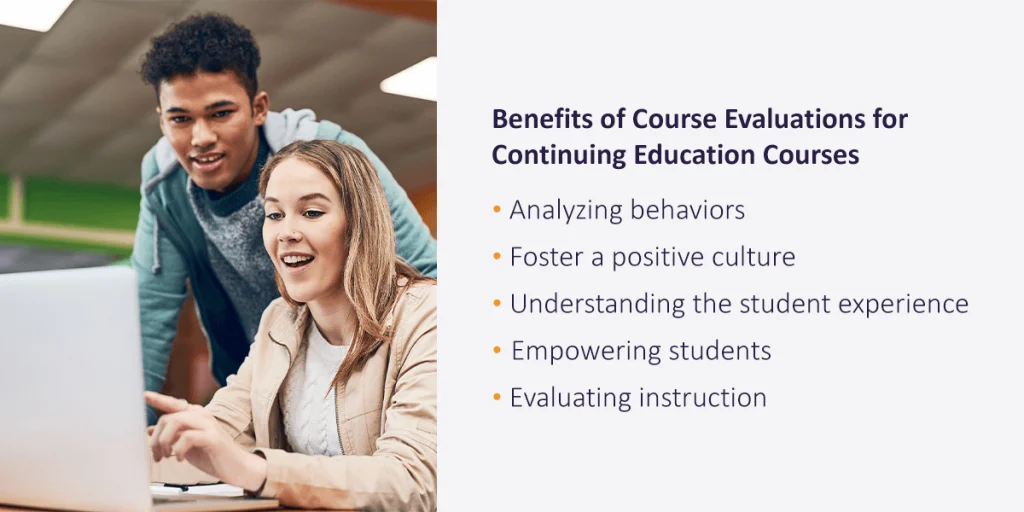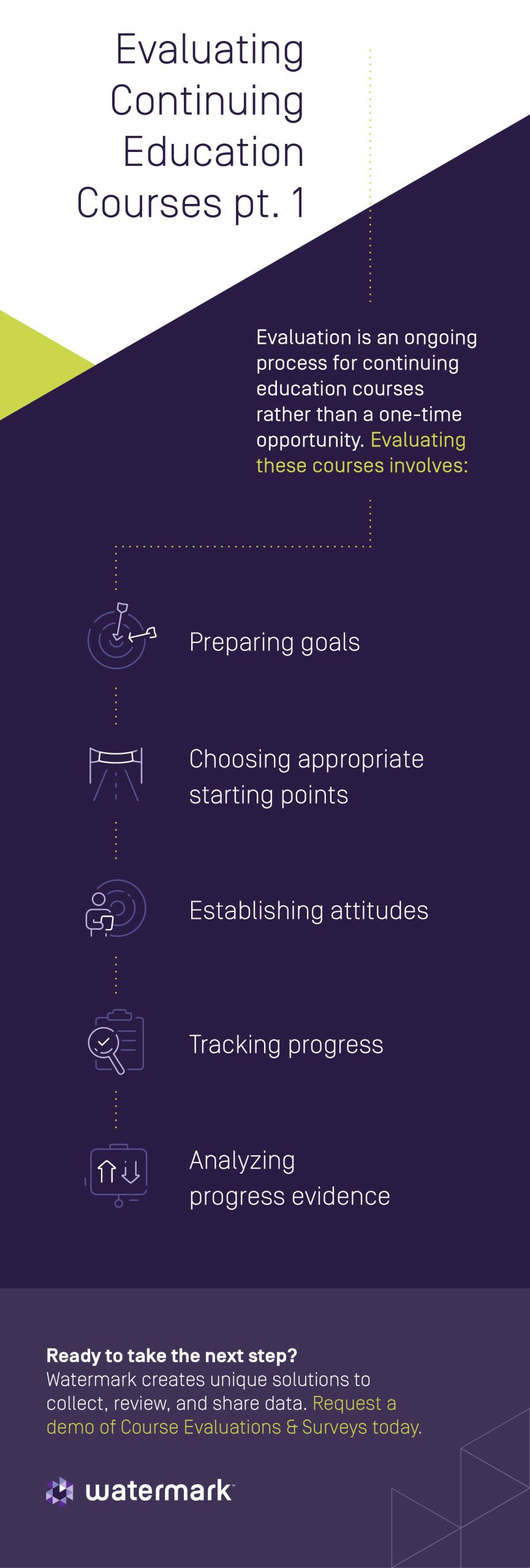



Students who pursue continuing education courses are looking to develop additional career skills, further their knowledge, and grow as well-rounded individuals. These courses can serve as refreshers for some career fields or expand their mind with new information.
With students looking for enriching experiences, it is essential to provide them with a quality education that keeps them engaged and interested. Course evaluations give higher education institutions an opportunity to evaluate material effectiveness, instructor success, and course efficacy. Here at Watermark, we understand the importance of course evaluations, and we’ve created this guide to help you develop yours. Discover the benefits of course evaluations and how to evaluate your continuing education courses.
Anytime you return to a course of study to learn new concepts, you are continuing your education. You do not need to work towards a degree to continue your education — any formal activity can refresh your current skills and knowledge. Additionally, you can conduct self-study or enroll in a class to continue your education.
When you enroll in a continuing education course, you may mirror a traditional college class or operate under a remote or hybrid learning model. Depending on the course structure, these programs may take hours or months to complete. Sometimes people choose to enroll in these courses to develop their skillset further, while other times, employers and state regulations require employees to take refresher courses to continue practicing in their field.
A course evaluation is a way to gather feedback and information regarding a course, instructor, teaching methods, and classroom culture. Higher education institutions use these assessments to evaluate whether students responded positively or negatively to course materials and determine if they retained valuable information.
Course evaluations may have short answer questions, open-ended responses, rated responses, or a combination of the previous options. Students complete course evaluations to explain their experience and highlight what they did or did not enjoy about a class. Typically instructors or institution administrators distribute these evaluations as end-of-semester assessments, but some institutions also utilize early and midterm critiques.
Students complete course evaluations anonymously and turn in physical or digital copies. Instructors and administrators use this feedback to reshape the curriculum, implement course changes, and find teaching methods that appeal to more students.

Course evaluations are important for driving institutional changes. To elicit the most accurate responses, instructors should communicate the importance of feedback to their students. Students may feel more inclined to respond truthfully when they understand that course evaluations can affect their academic experience.
Course evaluations have many benefits, including:

Evaluation is an ongoing process for continuing education courses rather than a one-time opportunity. Evaluating these courses involves preparing goals, choosing appropriate starting points, establishing attitudes, tracking progress, and analyzing progress evidence.
Instructors or administrators should prepare a continuing education course evaluation form template and distribute it to students as they work through the course or at the end. These forms may show a variety of questions you can ask regarding the beginning and end of the course. For example, a continuing education evaluation form template may ask:
If you opt to include short responses or open-ended questions, your template may have prompts such as:
You may decide to construct a unique continuing education evaluation template, but keep in mind that you may need to change the form. As you address various aspects of classroom culture and determine whether you’re making positive or negative changes, you may need to replace questions or remove them entirely. Additionally, some questions will be more applicable at the beginning of the course rather than at the end. Any time you distribute an assessment, you should ensure it is relevant to the current topics and materials.
Watermark creates unique solutions to collect, review, and share data. We know data drives change, and the more information you have to work with, the more meaningful insights you’ll experience. That’s why we’ve created a comprehensive suite of solutions that drive progress.
Watermark Course Evaluations & Surveys provide higher education institutions with innovative solutions that drive change. With our software, you can boost student response rates by delivering assessments right where they are. We’ve made it easy to create a repeatable process so you can customize surveys and evaluations and distribute them as quickly as possible. You can share your insights with your team through customizable reports that enable you to track trends easily.
Request a demo of Course Evaluations & Surveys today. You can ensure you’re delivering your students with an enriching curriculum in every course.






























































































































































































































































































































































































